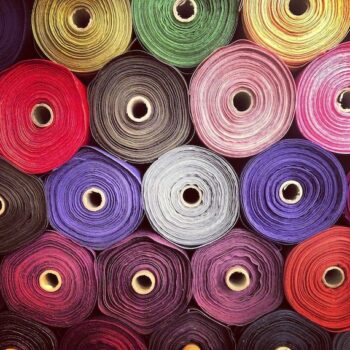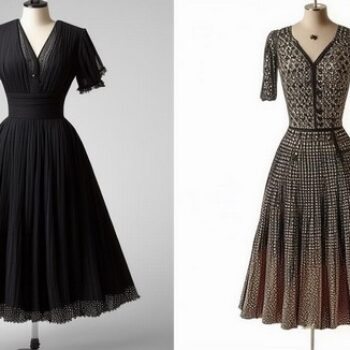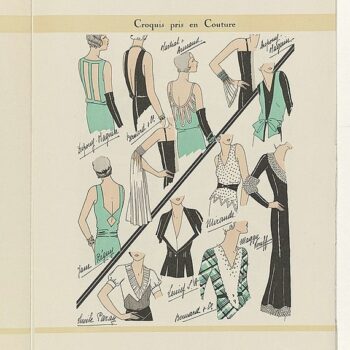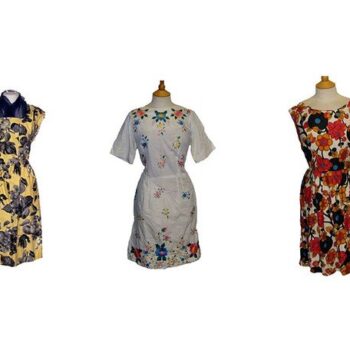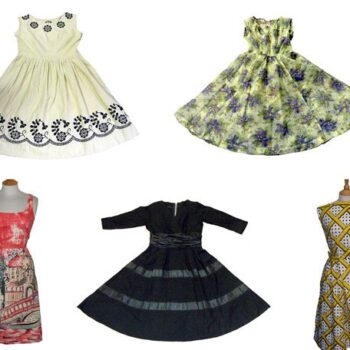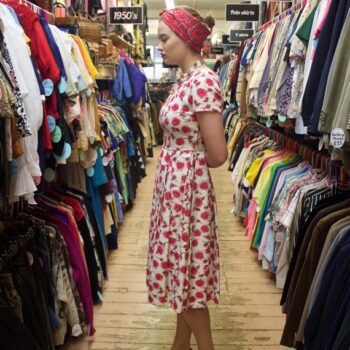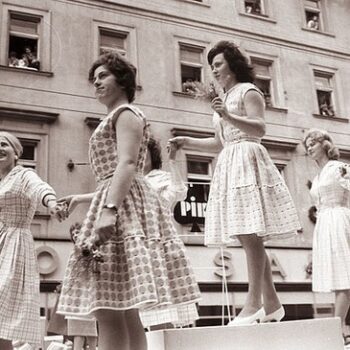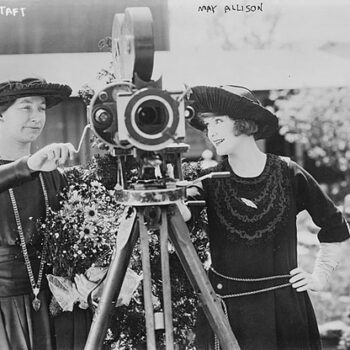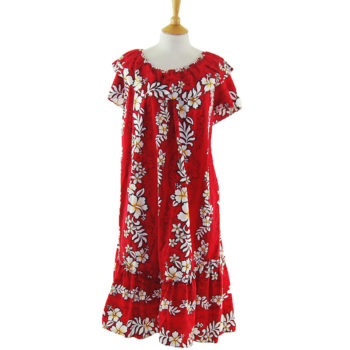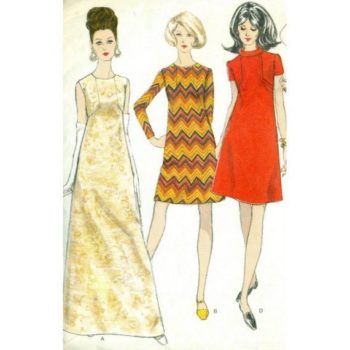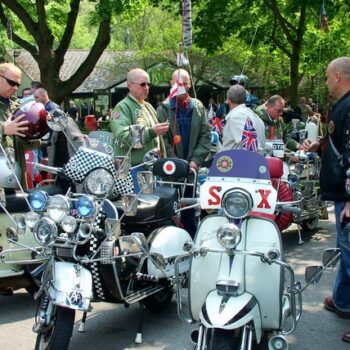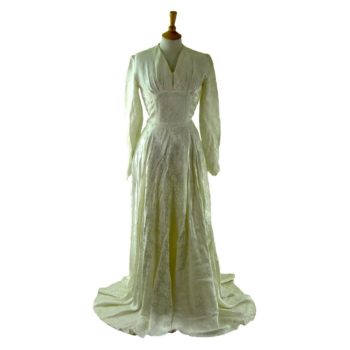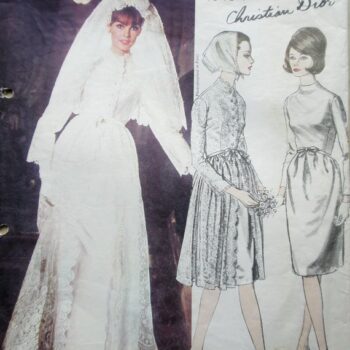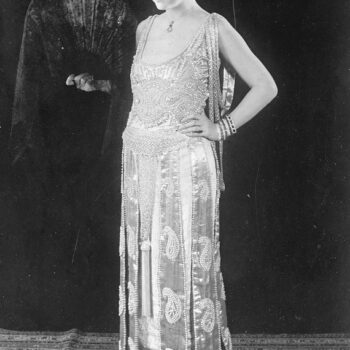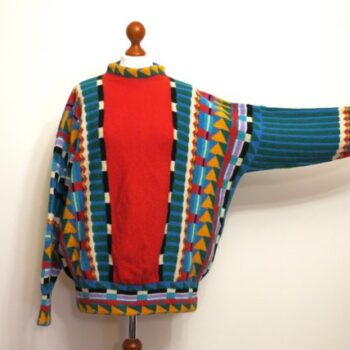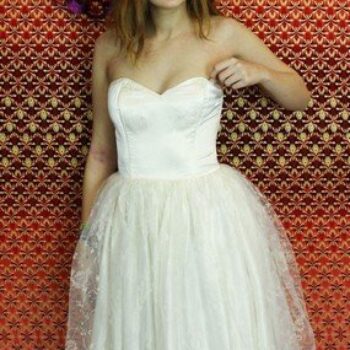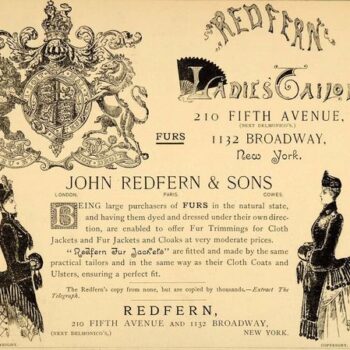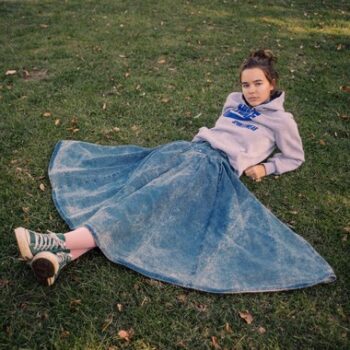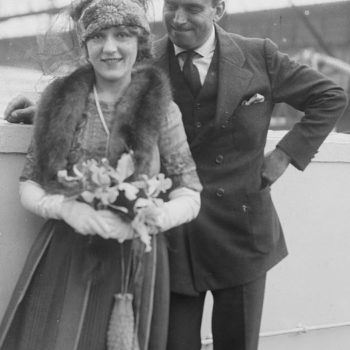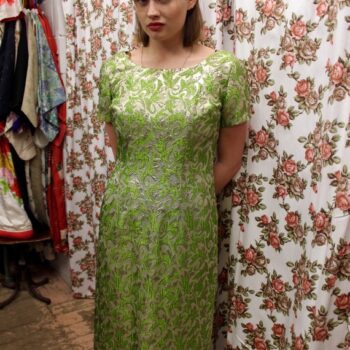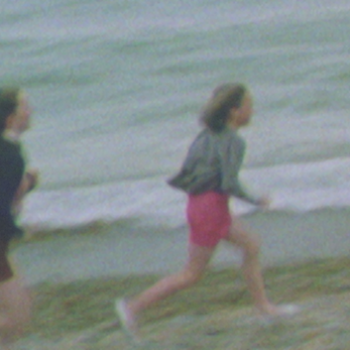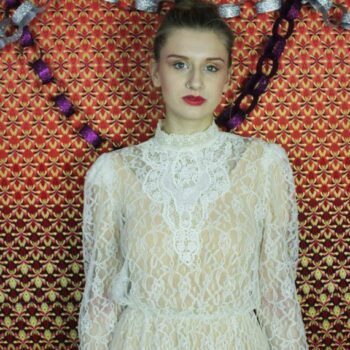1920s fabrics : From embroidered silks to printed flour sacks
August 4, 20161920s fabrics across the Western world went from the most gorgeous and luxurious embroidered silks for Parisian flappers, to cheerful printed cotton flour sacks, re-used by thrifty American housewives.
1920s fabrics
This is a 1926 fabric catalogue for ready embroidered dress lengths of silk crêpe de chine and crêpe georgette. Each piece of fabric, which would have been about two metres long, or rather, each dress kit since the fabric came with a fashion plate illustrating the finished design, a paper pattern, diagram and instructions on making the dress, cost a whopping £300-£500 in today’s prices. But the fabric is of the highest quality, and meticulously hand embroidered using fine silks. The samples also indicate that the silk pieces were also first dyed to the required colour, sometimes in an effect shading from one to the other, as in the ombre piece going from blue to pink.
Typical colours for 1920s fabrics
Even the production of this catalogue with its snippets of embroidery would be expensive, so its audience would be targeted. It is likely to have been designed to be borrowed by the client, with a fee to be paid if it wasn’t returned within a certain number of days, rather than handed out for free. These colours are typical for high fashion in the 1920s: the blues are good for day dresses (sands and beiges, as well as dusty pink, ash pink, old rose etc and crisper black and white ensembles were popular) while the bolder colours are good for night: leaf green, pink and violet on bottle green or red and white on black, or indeed any bright colours on black.
This particular company, despite the French title of the catalogue Broderies Universelles is a Swiss one, Sonderegger & Co, based in Herault since 1865. The catalogue is written in English and priced in pounds sterling, so the Swiss company were borrowing a little Parisian prestige for their English customers.
1920s fabrics – feed sack prints
At the other end of the scale, 1920s fabrics were produced in the same years as the silk in this catalogue but in such a different set of circumstances it may as well have been in a different world, not just half way across it. Feed sack vintage fabric was the opposite of beautiful hand embroidered silk for slinky dresses: poverty-stricken Americans in rural communities reused the cotton bags that animal feed, flour and sugar came in to make clothes.
A rising trend
Initially, before the 20th century, supplies from the store came in hand-made crates and wooden boxes. But these were leaky, heavy and cumbersome and with the invention of the sewing machine, cotton sacks could quickly and cheaply be run up to hold goods instead. At first these sacks were owned by the farmers, who stamped their initials on and re-filled them when they came back to the store, but it started to be obvious that it was much cheaper to just pre-fill the sacks at the factory.
Of course the thrifty housewives saw the potential for the unwanted sacks, unpicking the seams and using them as dish cloths or rags around the house. In poorer households the fabric, which wasn’t so dainty, was also used to make underclothes. There was an attempt to remove the printed labels of the feed sacks first, and various recipes were circulated, like rubbing with lard and then washing with lye soap. But the process wasn’t fail safe, and you can see home-made underwear from the turn of the century in museums that bear logos and legends like “Southern Best”. Of course, there are plenty of (apocryphal?) stories from the time too, such as the housewife who made her husband’s underpants from a flour bag but left the legend “self rising” on the crotch area by accident.
Ingenuity in vintage 1920s fabrics
By 1925 manufacturers, realising that people were re-using the cloth in this way, had the bright idea of printing the cloth bags first in different plain colours, then woven gingham checks, then going all out with attractive dress fabric designs. The actual logo was printed with a vegetable dye that would wash out easily, and later it was simply printed on a paper label that could peel off, leaving the fabric below unscathed.
One of the first manufacturers of 1920s fabrics to cotton on was the George P Plant Milling Co in St Louis, who created the “Gingham Girl” brand in 1925. They explained that getting a housewife to “demand” a particular brand of flour was tricky, when they were promoted on the basis of boring things like ash content and protein percentage, and moreover the packaging all looked the same. A tower of baby blue and pink checked sacks, decorated with the image of a beautiful belle dressed in a gingham crinoline with an elaborate hairdo would certainly have stood out on the shelves!
Popular gingham
I imagine that it’s true that wives and mothers immediately instructed their husbands to buy the flour with the pretty 1920s fabrics – it was usually the husband who rode to the nearest town to fetch necessities like this. One flour sack had enough material to make a child’s dress or set of baby clothes. You needed three sacks to make an adult woman’s dress.
The “Gingham Girl” brand also tried different labels like “Mother Gingham”, “Baby Gingham”, and “Gingham Queen”, and colour ways like brown and white or green and white were also trialled, for women to make men’s shirts. The idea was a huge success, and the George P Plant Milling Co promoted it heavily with Gingham Girl booths at trade fairs, little consumer giveaways like distinctive Gingham notebooks, and even a real life Gingham Girl doing promotional tours (who sadly wasn’t nearly as elegant as her cartoon counterpart).
The George P Plant Milling Co had trademarked the use of gingham on flour bags before beginning the enterprise, but they couldn’t stop competitors from using other patterns.
Previous attempts at producing plain coloured calico bags hadn’t been as successful, possibly because the effort was a little half-hearted, with poor quality dyes used that didn’t wash well, tending to run, fade, and produce muddy, unattractive colours in very short order.
Washing 1920s fabrics
Actually, the expensive silk I talked about earlier did not wash well either, in fact unlike today’s silks the dresses couldn’t be even hand washed as a whole. They were spot cleaned as necessary and lady’s maids were expected to have knowledge of early dry cleaning methods to remove smells and stains from delicate 1920s fabrics.
Feed sack garments had to submit to a good scrubbing with rough soap, especially children’s clothes, underwear and men’s work clothes. Wives and eldest daughter now started to take an interest in the shopping for dry goods, often going with the farmers to pick out their flour sacks. When manufacturers realised that housewives were an economic force in the household they started to take the fabric sacks seriously, and not only produced colour fast prints but went into competition to produce the most attractive, promoting the fact that they employed some well-known print designers to do so. If a woman liked a design and wanted it for a dress for herself, she would need three identical flour sacks, so the company would sell more flour.
Beautiful and thrifty vintage print 1920s fabrics
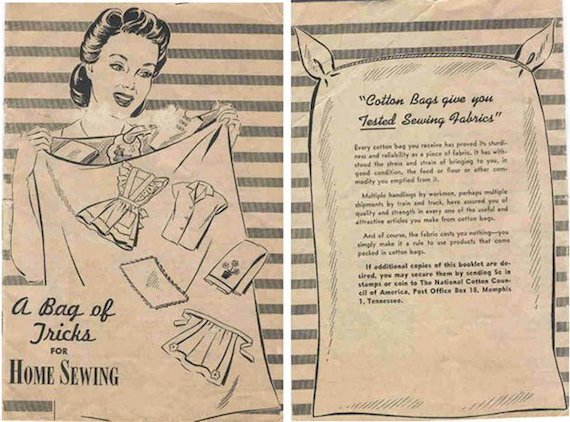
1940s feed sack advert.
The prints were attractive, and the fabric quality ranged from quite rough, when the sack was for animal feed, which could be used for curtains and other soft furnishings, to fine cottons for flour and sugar for clothing. The fabrics were so desirable that farmers who had a large consumption of the products contained within the sacks, for example chicken farmers getting through a lot of chicken feeds, were able to sell or barter the excess sacks and sometimes peddlers would come around to remoter villages with the empty sacks for sale. Women sometimes gathered into fabric swapping parties, to get just the print they wanted.
The practice came to prominence in the Great Depression of 1930s America, when the country as a whole faced great financial hardship, but if you hear of dresses made of feed sacks, don’t imagine that the whole country was suddenly swathed in burlap. On the contrary, fine cotton dresses in pretty sprigged prints were sometimes the result. Feedsack companies printed rag doll patterns onto the bags, ready-made pillow cases with borders, appliqués and quilt blocks.
The decline of feed sack fabric
By the second world war, the use of feed sacks was seen as not only thrifty but patriotic too, and for some time after the printed fabric bags remained popular, though tough paper sacks had been developed by the 1950s which superseded the fabric ones and it was starting look very rural and old-fashioned.
In the 1960s an effort was made to revive the tradition, and feed sacks made from modern poly-cottons and rayon and were printed with Disney and other cartoon characters in an effort to update the image of feed sack fabrics. A TV commercial was even produced, but the effort fell flat because by then, American housewives were able to buy ready-made dresses, soft furnishings and baby clothes far more cheaply and compared with the 1920-1940s when almost every working class woman made her own clothes and those for her household, not many were active sewers.
vintage fabric prints
When the dresses made from the original vintage floral fabric wore out they were recycled into the great American tradition of patchwork, and these vintage fabrics are sought after today for the same purpose. There is a great romance in imagining the history behind these sturdy and practical 1920s fabrics, some of which are now over a century old.




